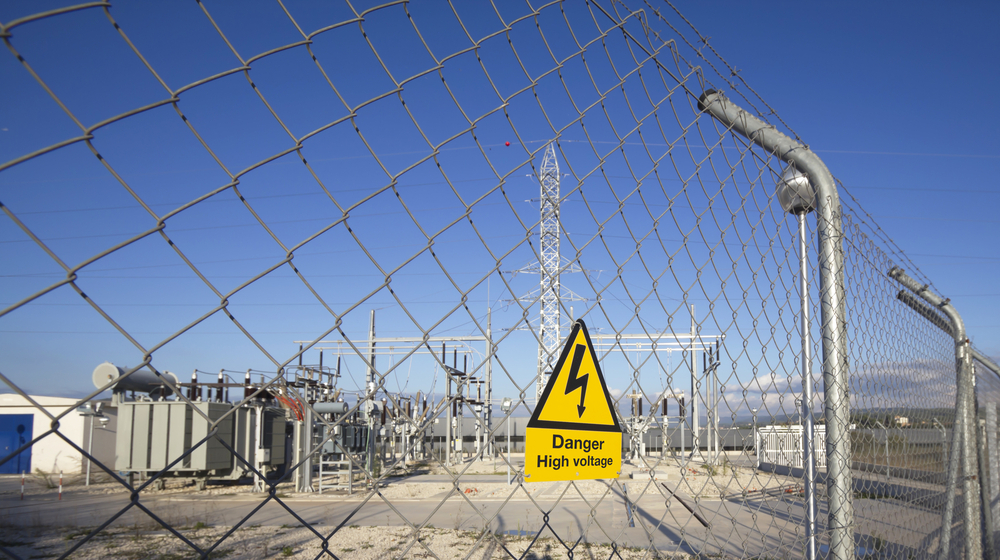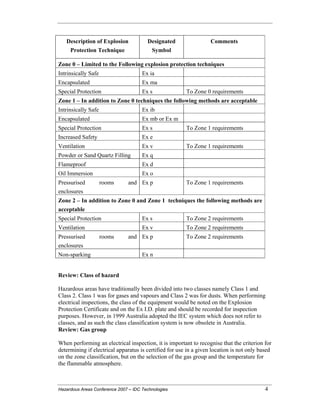A Biased View of Roar Solutions
A Biased View of Roar Solutions
Blog Article
Some Known Details About Roar Solutions
Table of ContentsRoar Solutions Things To Know Before You Get ThisRoar Solutions Fundamentals ExplainedThe Definitive Guide to Roar Solutions
In such an atmosphere a fire or explosion is possible when three fundamental conditions are satisfied. This is usually described as the "dangerous location" or "combustion" triangle. In order to protect installations from a prospective surge an approach of evaluating and classifying a possibly harmful area is needed. The purpose of this is to guarantee the right choice and setup of tools to ultimately avoid an explosion and to ensure safety and security of life.
(https://papaly.com/categories/share?id=f67ddeb126ff42bfb724a48f0cebd961)
No tools ought to be mounted where the surface area temperature level of the equipment is more than the ignition temperature level of the offered risk. Below are some typical dust hazardous and their minimum ignition temperature level. Coal Dirt 380C 225C Polythene 420C (melts) Methyl Cellulose 420C 320C Starch 460C 435C Flour 490C 340C Sugar 490C 460C Grain Dirt 510C 300C Phenolic Material 530C > 450C Aluminium 590C > 450C PVC 700C > 450C Soot 810C 570C The likelihood of the risk existing in a focus high enough to create an ignition will vary from place to location.
Hazardous area electric tools perhaps created for usage in greater ambient temperatures. Field Repair Service By Authorised Personnel: Challenging screening may not be required however specific treatments may need to be complied with in order for the equipment to maintain its third party ranking. Each item of equipment with a hazardous ranking ought to be reviewed separately.
Not known Details About Roar Solutions
The equipment register is a thorough data source of tools documents that includes a minimum set of fields to determine each product's place, technological specifications, Ex-spouse classification, age, and environmental information. This info is critical for tracking and handling the equipment efficiently within dangerous areas. On the other hand, for routine or RBI sampling examinations, the grade will certainly be a combination of Comprehensive and Close examinations. The proportion of In-depth to Shut inspections will be established by the Tools Danger, which is examined based upon ignition threat (the likelihood of a source of ignition versus the chance of a combustible environment )and the hazardous area classification
( Area 0, 1, or 2). This variant will certainly additionally influence the resourcing requirements for work prep work. As soon as Lots are specified, you can establish tasting strategies based upon the example dimension of each Lot, which describes the variety of arbitrary equipment products to be examined. To identify the required example dimension, two elements require to be examined: the dimension of the Lot and the classification of inspection, which shows the level of initiative that need to be used( decreased, normal, or raised )to the inspection of the Whole lot. By combining the classification of inspection with the Lot size, you can then establish the proper rejection criteria for a sample, meaning the allowed variety of faulty things found within that sample. For even more details on this process, please refer to the Energy Institute Standards. The IEC 60079 typical advises that the optimum period in between evaluations must not surpass 3 years. EEHA assessments will certainly likewise be carried out beyond RBI projects as component of arranged maintenance and equipment overhauls or repair work. These evaluations can be attributed toward the RBI example dimensions within the affected Whole lots. EEHA assessments are conducted to identify mistakes in electrical tools. A heavy racking up system is essential, as a solitary tool may have several mistakes, each with varying degrees of ignition danger. If the consolidated rating of both inspections is much less than twice the mistake score, the Whole lot is considered appropriate. If the Whole lot is still taken into consideration undesirable, it needs to undergo a full examination or validation, which may activate more stringent inspection protocols. Accepted Great deal: The sources of any kind of faults are identified. If an usual failing setting is discovered, additional equipment might require inspection and repair work. Faults are classified by extent( Security, Stability, Home cleaning ), guaranteeing that urgent issues are assessed and attended to quickly to alleviate any influence on safety or operations. The EEHA database ought to track and videotape the lifecycle of faults along with the restorative activities taken. Implementing a robust Risk-Based Evaluation( RBI )technique is critical for ensuring conformity and safety in managing Electric Equipment in Hazardous Locations( EEHA) (eeha). Automated Fault Scoring and Lifecycle Monitoring: Easily manage mistakes and track their lifecycle to enhance examination precision. The introduction of this support for risk-based evaluation even more enhances Inspectivity's setting as a best-in-class option for regulatory conformity, in addition to for any asset-centric examination usage instance. If you want discovering more, we welcome you to request a presentation and discover exactly how our remedy can transform your EEHA monitoring procedures.
Roar Solutions Things To Know Before You Buy

In regards to explosive danger, an unsafe area is an environment in which an eruptive ambience is existing (or might be anticipated to be existing) in amounts click for more info that call for unique precautions for the building, installation and use devices. hazardous area course. In this short article we discover the difficulties faced in the work environment, the threat control procedures, and the needed proficiencies to function safely
It is a repercussion of modern-day life that we manufacture, keep or handle a series of gases or fluids that are deemed combustible, and a variety of dusts that are considered flammable. These substances can, in specific conditions, form eruptive environments and these can have significant and unfortunate repercussions. Many of us recognize with the fire triangular remove any type of one of the 3 components and the fire can not occur, but what does this mean in the context of dangerous areas? When damaging this down right into its simplest terms it is basically: a combination of a certain amount of release or leak of a certain material or product, combining with ambient oxygen, and the visibility of a resource of ignition.
In many circumstances, we can do little concerning the degrees of oxygen in the air, yet we can have significant influence on sources of ignition, for instance electric devices. Hazardous areas are recorded on the unsafe location category illustration and are determined on-site by the triangular "EX-SPOUSE" indication. Right here, among various other crucial details, areas are split into three types depending upon the threat, the possibility and period that an eruptive environment will certainly exist; Zone 0 or 20 is considered one of the most unsafe and Area 2 or 22 is deemed the least.
Report this page